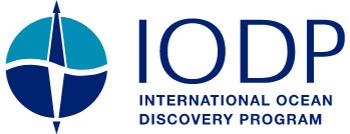Project to Study Ice Volume History
 Julia Wellner, an assistant professor in sedimentology in the Department of Earth
and Atmospheric Sciences, has been selected a co-chief scientist of the International
Ocean Discovery Program drilling expedition 379. The expedition, scheduled for January-March
2019, will study the Antarctic ice volume history.
Julia Wellner, an assistant professor in sedimentology in the Department of Earth
and Atmospheric Sciences, has been selected a co-chief scientist of the International
Ocean Discovery Program drilling expedition 379. The expedition, scheduled for January-March
2019, will study the Antarctic ice volume history.
The West Antarctic Ice Sheet (WAIS) is largely marine-based, highly sensitive to climatic and oceanographic changes, and has had a dynamic history over the last several million years. If completely melted, it could result in a global sea-level rise of 3.3-4.3 meters.
 Expedition 379 will obtain records from the continental shelf and rise of the Amundsen
Sea to document WAIS dynamics in an area unaffected by other ice sheets and that also
currently is experiencing the largest ice mass loss in Antarctica. The primary objectives
include:
Expedition 379 will obtain records from the continental shelf and rise of the Amundsen
Sea to document WAIS dynamics in an area unaffected by other ice sheets and that also
currently is experiencing the largest ice mass loss in Antarctica. The primary objectives
include:
- Reconstructing the Paleogene to Holocene glacial history of West Antarctica,
- Correlating the Amundsen Sea WAIS-proximal records with global records of ice volume changes and air/seawater temperature proxy records,
- Constraining the relationship between incursions of warm water masses onto the continental shelf and the stability of marine-based ice sheet margins, and
- Reconstructing major WAIS advances onto the middle and outer shelf, including the first ice sheet expansion onto the continental shelf of the Amundsen Sea Embayment and its possible control by the uplift of Marie Byrd Land.
The expedition will be Wellner's 11th field season in Antarctica and her first participation in IODP drilling. The science party of the drilling leg will include about 30 people from IODP member countries, including the U.S., Japan, E.U. members, Korea, China, New Zealand, Australia, India, and Brazil.